The post What If China Cut Off Trade with the US Completely? first appeared on China Academy.
]]>
On April 10, Trump raised tariffs against China to 145% and declared, “We are waiting for their call.” In response yesterday, China fired back by saying, “A tariff-wielding barbarian who forces other nations to call and beg for mercy should never expect such a call from China.”
Why doesn’t China worry about Trump’s extravagant numbers and aggressive bargaining tactics? In fact, public statistics prove that even if China were to immediately halt all trade with the United States, it wouldn’t be the end of the world for China. However, if China were to stop buying just one American product, the U.S. economy could spiral into a deadly cycle.
In 2024, China’s total export value reached $3.58 trillion, while the Office of the U.S. Trade Representative reports that U.S. imports of Chinese goods in 2024 totaled $438.9 billion. This means that even if China and the United States completely ceased doing business with each other, China’s foreign trade exports would still exceed $3 trillion—well above the 2020 level of $2.73 trillion. It appears that Trump has forgotten there is more to this world than just the United States; there is also the European Union, Russia, and the Global South.
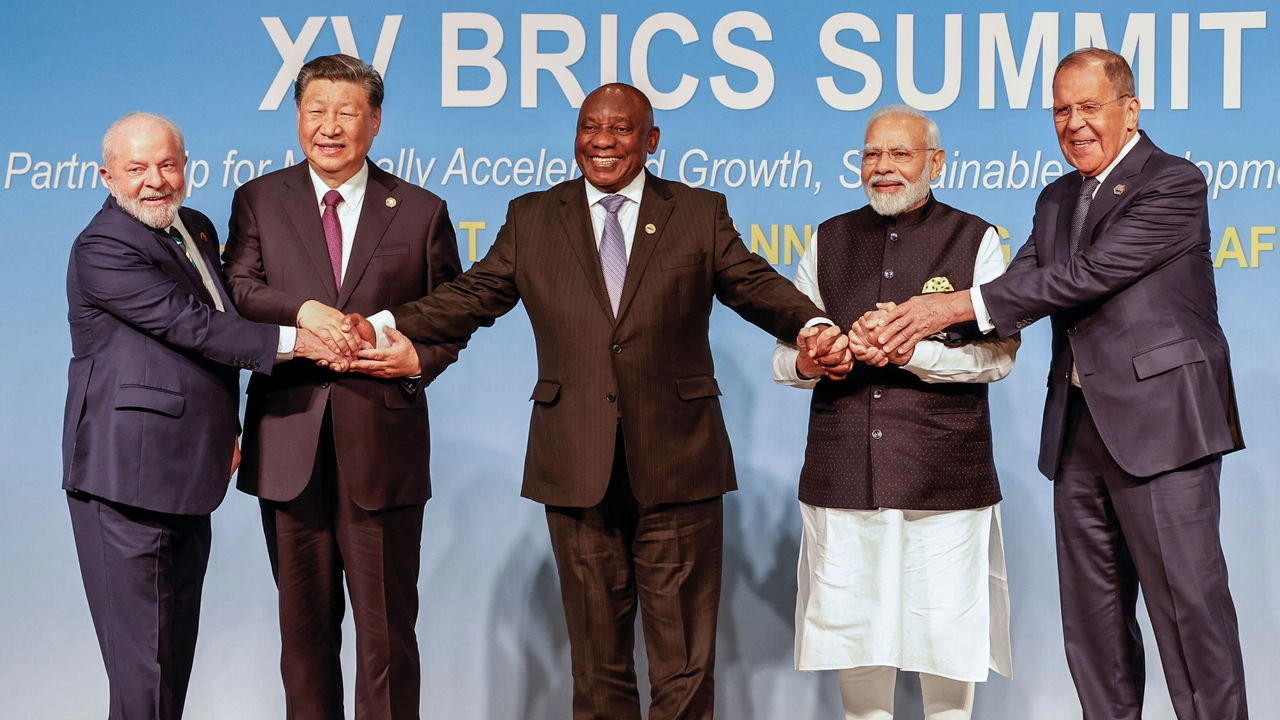
In fact, even if the entire EU were to join the U.S. in completely stopping trade with China, it wouldn’t be devastating for China. According to Euro News, in 2024 the EU imported goods worth €517.8 billion, around $586 billion from China. That means if both the U.S. and the EU immediately ceased buying Chinese goods, China’s export volume would still reach over $2.5 trillion—around same level as 2018’s $2.65 trillion.
And what does a reversion to 2018 really mean?
Back in 2018, the U.S. government imposed a tariff on approximately $200 billion worth of Chinese goods. Yet during that same time, China was making significant strides in its economy, technology, and diplomacy. For example, India attended the Shanghai Cooperation Organization summit for the first time, Hainan Province was designated as a free trade zone, the Chang’e-4 probe achieved the historic first landing on the far side of the Moon, and nations such as the Dominican Republic, El Salvador, and Burkina Faso severed their so-called “diplomatic relations” with Taiwan island.
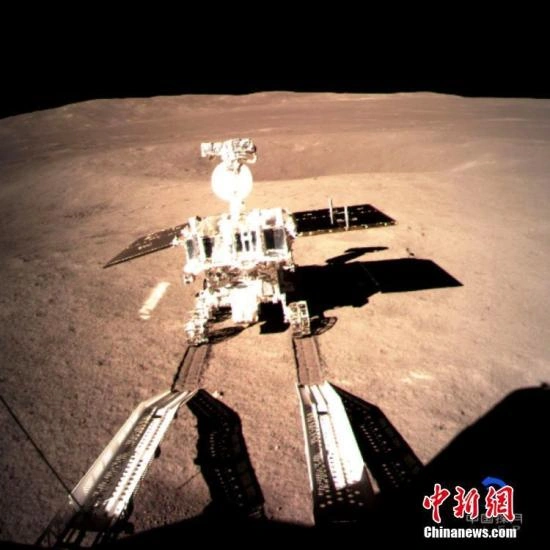
Thus, in the worst-case scenario envisioned by Trump’s tariffs—namely, a complete halt in China-U.S. trade—China’s economy might only revert to its 2018 state. For many Chinese, 2018 is even a somewhat nostalgic and favorable period. There’s really nothing to fear, which is why China has made it clear that it is prepared to see this through.
Now, let’s consider another angle: what if China were to stop purchasing one specific American product—U.S. Treasury bonds?
Currently, the U.S. government carries nearly $36 trillion in debt. However, a declining American manufacturing sector finds it difficult to generate the trade surpluses needed to ease the debt crisis—a challenge that is one of the primary reasons behind Trump’s tariff war with China. The solution, though, is flawed right from the start. Since April 4, the yield on the 10-year U.S. Treasury note has surged to about 4.5%.
This rise in yields spells disaster for the U.S. economy, and here’s a simple explanation: Imagine you have a government bond purchased for $100 that will pay you $103 after 10 years—a 3% return. Now, picture someone urgently selling a similar bond for only $90. A new buyer would still receive $103 in 10 years, netting a return of $13 instead—an attractive yield that has sharply increased compared to before.
What this tells us is that people are selling U.S. government debt because they no longer have confidence in its value. Jonathan Cohn, head of U.S. rates desk strategy at Nomura Securities International told Reuters, the underperformance of Treasuries compared to swaps signaled “heavy foreign real money selling,”
As more investors sell, bond prices fall and yields rise. The problem is that the U.S. government must continuously borrow money by issuing new bonds to pay off the old ones. With market confidence eroding, the government is forced to offer even higher interest payments to attract buyers. However, an executive catering for hedge fund clients at a large bank, speaking on condition of anonymity, told Reuters investors have been looking for alternatives to U.S. assets amid market volatility, including alternatives to U.S. Treasuries.
Over time, these ballooning interest payments could grow so large that even the entire annual income of the country wouldn’t be sufficient to cover them, potentially pushing the U.S. economy toward a severe crisis—or even collapse.
Now, the question remains: who is selling U.S. debt? According to CNBC, as of January 2025, China holds around $760 billion in U.S. government bonds, making it the second-largest foreign holder after Japan. Notably, Japan’s Finance Minister recently asserted that the nation has no intention of using its U.S. Treasury holdings as a bargaining chip against Trump. So, it’s worth pondering: who really crafted this masterpiece of economic leverage?
Even for Trump, this should not be a very difficult problem.
The post What If China Cut Off Trade with the US Completely? first appeared on China Academy.
]]>The post Can Chinese Businesses Abandon the US Market? first appeared on China Academy.
]]>On April 2, Trump signed an executive order imposing “reciprocal tariffs” on numerous countries, causing significant declines in the three major U.S. stock indices and sparking ongoing volatility in Asian stock markets, crude oil futures, cryptocurrencies, and precious metals.
Unlike the panic and pessimism in the capital markets, foreign trade practitioners under this tariff “club” seem relatively calm, even numb. Since Trump’s return to power, foreign trade companies and cross-border merchants have been mentally prepared, but some were still caught off guard when the hammer finally fell.
No one knows how this so-called “economic revolution” by Trump will ultimately conclude.
1. Who are the winners and losers?
According to the April 2 executive order, almost all Chinese goods exported to the United States will incur an additional 34% tariff. Combined with previous rates, total tariffs on some goods (such as textiles and machinery) could reach up to 54%. A report by BOC International estimates that considering factors like the fentanyl issue, the actual tax rate on Chinese goods could rise to 65-70%.
“This is devastating for 80% of small-package direct mail sellers,” said Jason, who runs a direct-to-consumer (DTC) eyewear brand.
Jason’s eyewear brand launched in early 2024 and quickly entered the U.S. market, boasting a high cost-performance ratio and fast product updates, with a repeat purchase rate once reaching 20%. However, with the increasingly severe Sino-U.S. trade environment this year, he is gradually shifting his business focus to other developed countries. “As long as you’re doing cross-border goods, you’re affected,” Jason currently adopts the mindset of “take it one day at a time,” ready to completely exit the U.S. market at any moment.
Unlike cross-border “newbies” like Jason, Yiwu big seller Su Jian has been through multiple trade frictions since the “Trump 1.0” era. “There are impacts for sure, but we’re used to it.” Over the years, Su Jian expanded export markets to dozens of countries, so this round of tariff hikes has limited impact on the overall business landscape.
To avoid U.S. tariff risks, many companies previously shifted supply chains to Southeast Asian countries. However, the biggest difference with this U.S. tariff hike is that it targets not only goods from China but also over 100 global trade partners, meaning companies with factories in Southeast Asia are not exempt.
Vietnam was once the biggest winner of the Sino-U.S. trade war, absorbing 30% of China’s transferred production capacity over the past decade, with exports surging from $150 billion to $600 billion. However, this “reciprocal tariff” slaps Vietnam with a rate of 46%, among the highest globally. According to media reports, Vietnam’s top leaders have indicated readiness to negotiate reducing import tariffs on U.S. goods to zero to avoid domestic economic shocks.
In contrast, Mexico might be one of the few countries benefiting from the “reciprocal tariffs.” Article 3 (d) and (e) of the executive order stipulates that goods imported from Canada and Mexico remain subject to the tariff policy effective in March 2025—25% tariffs on all Canadian or Mexican products that do not meet the USMCA origin criteria (10% tariffs on energy/energy resources and potash from Canada). Xue Feng, a partner at Founders Law Firm, explained that these clauses mean the reciprocal tariffs do not apply to Canada and Mexico, and key goods (such as automobiles, agricultural products, textiles, and pharmaceuticals) continue to enjoy duty-free access to the U.S.
2. Should they give up, or persist?
Using tariffs as a weapon and negotiation lever by Trump is not new for companies forced to play the “pawns” role. The key issue is the bottom line they’re willing to bear and whether they’re prepared to pay the necessary price.
In February, former dean of the Ministry of Commerce’s Research Institute, Huo Jianguo, disclosed at an event at the China Enterprise International Service Center that according to a U.S. Congress proposal not yet activated, tariffs on Chinese goods will increase to about 40%. At that time, Trump just announced a 10% tariff hike on Chinese goods. While visiting Zhejiang, Huo found businesses generally believed a 10% tariff is manageable. “If costs were to be shared, businesses would bear 30%, importers another 30%, and another 30% transferred to consumers.”
Han Ling, operating a high-end women’s lingerie brand, told us, “Raising prices by 1-2 dollars will cover the 10% increase,” but with the sudden tariff spike, foreign trade firms are recalculating cost sharing. Some merchants angrily shared customer emails on Xiaohongshu requesting lower supply prices, stating, “This business isn’t worth it.”
In practice, company responses fall into three categories:
1. Temporary Suspended Group
The company Li Jing works for just built a factory in Cambodia earlier this year, “Originally planned a business trip during the Qingming Festival, but now all projects are halted due to the policy.” Not only Li Jing; many merchants stated on social media they received temporary suspension notices from North American clients right after Trump’s order.
2. Prepared Response Group
After Trump won last year’s election, some firms worried about a new tariff war, attempting to shift business to Southeast Asia, the Middle East, or other emerging markets or reduce investments in the U.S. market. Many small to mid-sized enterprises started increasing overseas warehouse deployments to hedge against direct export goods tariffs. Cross-border e-commerce platforms like Temu and SHEIN began investing more in a “semi-managed” model last year, guiding merchants to choose overseas warehouses.
3. No Alternatives Group
However, not every region can be a “substitute” for the U.S. market. According to several institutions, like FTI Consulting, the U.S., which bred e-commerce giants like Amazon and Wish, will see e-commerce sales reach about $1.2 trillion in 2024, a market size nine times Southeast Asia’s and 32 times the Middle East’s.
“Brands capable of rapid overseas growth will undoubtedly choose the U.S. market first. Only by establishing a foothold in the U.S. can you be considered a truly global brand,” said a cleaning appliance brand.
If there’s no better choice, some businesses are reluctant to abandon the U.S. market. Others simply have no alternative. Han Ling’s brand is supported by a large traditional foreign trade enterprise doing long-term OEM work for European and Middle Eastern clients, “To protect client interests, we can’t target Europe and the Middle East with our brand. Southeast Asia and South America’s spending power doesn’t fit our brand positioning, nor align with the aesthetic direction,” Han Ling says.
Therefore, regardless of how the tariff war develops, Han Ling must confront it. On one hand, she seeks to cut factory production costs, “Reducing materials or labor costs to cut 10%.” On the other hand, raising prices, planning to hike e-commerce channel product prices by 20% in mid-April, “ultimately passing the costs to consumers.”
In Huo Jianguo’s view, high tariffs have been Trump’s consistent negotiation strategy, “First name a price to push for terms. We are exploring ways to alleviate these conflicts. National interests must be protected, necessary actions must be taken.”
In response to the new tariff policy, China quickly implemented countermeasures:
The Office of the State Council Tariff Commission announced imposing a 34% tariff on all U.S. imports, effective at 12:01 on April 10, on top of the existing applicable tariffs.
The Ministry of Commerce decided to add 16 U.S. entities, like Gaodian Aviation Technology Company, to the control list for export controls and listed 11 entities such as Skydio onto the unreliable entity list; from April 4, initiated an anti-dumping investigation on medical CT tubes imports from the U.S. and India.
The General Administration of Customs decided to suspend the high sorghum import qualification for one U.S. company, the import of poultry bone meal qualification for three U.S. companies, and the import of poultry products qualification for two U.S. companies.
On April 4, the Ministry of Commerce and the General Administration of Customs issued an announcement regarding export controls on seven categories of medium-and heavy rare earth-related items such as Samarium, Gadolinium, Terbium, Dysprosium, Lutetium, Scandium, and Yttrium.
“It’s too early to say there’s a final verdict; who knows what Trump will do next?” For foreign traders like Han Ling who are accustomed to facing adversity, whether it’s the high tariff policy or the upcoming end of the small tariff exemption policy in a month, everything is just beginning, and all they can do is wait and see and respond as best as they can.
The post Can Chinese Businesses Abandon the US Market? first appeared on China Academy.
]]>The post Trump’s Lies About Voice of America’s Fall first appeared on China Academy.
]]>The post Trump’s Lies About Voice of America’s Fall first appeared on China Academy.
]]>The post How Would Mao Zedong Cope With Trump? first appeared on China Academy.
]]>In the collective memory of the Chinese people, Mao is credited with pushing back U.S. forces during the Korean war and securing a safe external environment for China to develop its economy, pivotal for the newly-established socialist country.
Never has a piece of his advice seemed more relevant. Below are some of Mao’s most popular strategies, frequently quoted in academic forums, discussed on the Chinese internet, and even featured in trending merchandise
“Throw one punch to prevent a hundred blows”
A catchy phrase Mao Zedong used as his rationale for sending troops to Korea peninsula is now frequently referenced on Chinese social media during discussions of the ongoing tariff war.
Public opinion in China was divided when Trump first launched the trade war in 2018. Many questioned whether China, to some extent, deserve the punishment—was it aggressive “wolf warrior diplomacy” or supposedly violations of trade rules that provoked the U.S.? -typical of Confucian self-reflection.
Such voices of appeasement have now naturally faded, as years of trade wars, high-tech blockades, and even political persecution of Chinese scientists in the U.S. have shattered lingering illusions about the legitimacy of US’s actions. A broad consensus has formed across Chinese society: the U.S.’s strategic containment of China cannot be altered by any one-sided overture of goodwill. When China’s top diplomat Yang Jiechi said this to US officials in 2021 — ‘We thought too well of you’ — the remark quickly appeared on many people’s T-shirts and phone cases.
Most Chinese have now come to the conclusion that given China’s size and economic heft, caving to the U.S. pressure is simply not an option. Plus, China now holds far more cards than it did during Trump’s first term.
In 2018, China faced critical technology bottlenecks in 35 areas, including lithography machines, semiconductors, tactile sensors, and components for medical imaging equipment. By 2025, China is expected to have overcome at least 85% of these bottlenecks.
Additionally, China’s macroeconomic landscape has shifted significantly since Trump’s first term. Exports now account for less than 20% of China’s GDP, with exports to the U.S. representing only 14.7% of total exports—a 4.5 percentage point drop compared to 2018 when they made up 19.2%.
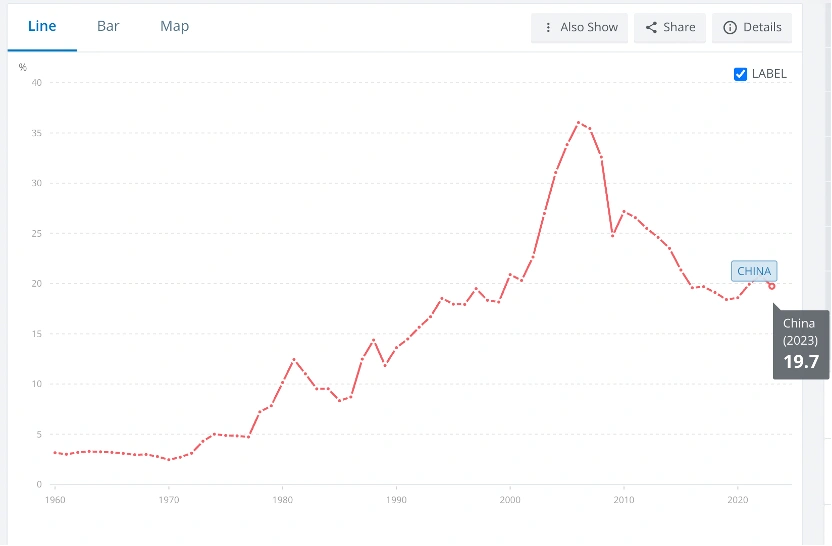 Exports of goods and services (% of GDP)- China
Exports of goods and services (% of GDP)- China
While pressure is now indeed mounting on exporters, it is domestic stock market investors who are now bearing the brunt of the impact from this round of tariff war. On April 7, over 3,000 shares in China’s A-share stock market hit their limit-down levels and the Growth Enterprise Market Index plummeting by 12.5%.
The Korean War, known in China as “the war to resist US aggressors and aid Korea in defending the motherland”, once again appeared in public discourse. The slogan “Every generation has its own Battle of Shanggangling” became popular among people trying to boost morale-Shanggangling was a grueling battle in the Korean War that the Chinese army won. Since then, Shanggangling has become a symbol of perseverance in the face of hardship. Tariff war might be bloody, but it’s not invincible.
“We will fight as long as they want to fight, and fight on until complete victory is achieved”
This statement was made by Mao Zedong in February 1953, when no sign of armistice was on the horizon.
The Chinese Embassy in the U.S. echoed this sentiment in a tweet in early March: “If the U.S. truly wants to solve the fentanyl issue, the right thing to do is to consult with China by treating each other as equals. If war is what the U.S. wants—be it a tariff war, a trade war, or any other type of war—we’re ready to fight till the end.”
The most recent “war mobilization” from China’s leadership came from Chinese Premier Li Qiang who met with private business leaders yesterday, saying that: “ I urge entrepreneurs to cultivate a deep sense of national responsibility, adapt proactively, and strengthen their enterprises, contributing to the country’s development.”
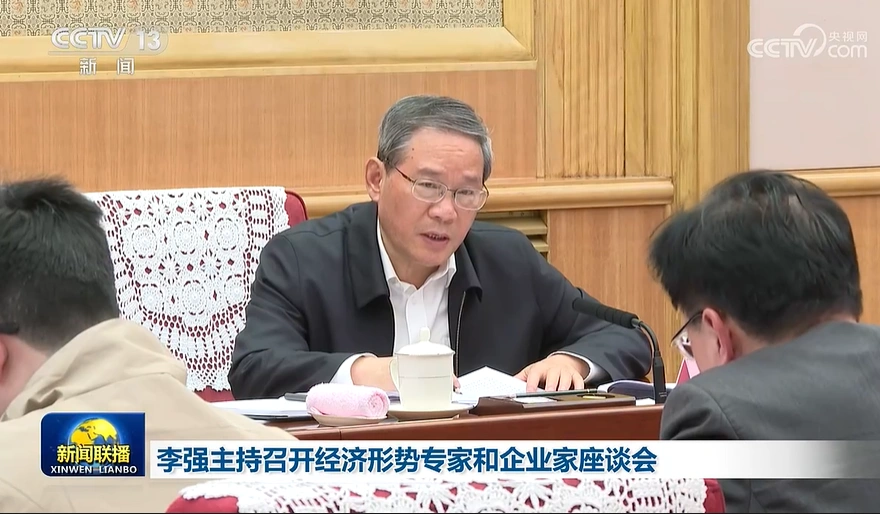
A sense of wartime solidarity is quietly manifesting itself. Chinese company Jinhe Biotech, the world’s largest producer of veterinary-grade chlortetracycline-a core growth promoter essential to the U.S. livestock industry-has recently announced plans to increase the price of its products in the U.S..
In addition,to stabilize the stock market, hundreds of publicly traded companies, including CATL, Midea, and Kweichow Moutai, have announced share buybacks or significant shareholder investments, injecting over 10 billion yuan to bolster investor confidence. Today, the A-shares market finally received good news, opening with gains across the board as all three major indexes rose.
Guerrilla Warfare When Outnumbered
In Mao Zedong’s book “On Guerrilla Warfare”, he famously wrote “when guerrillas engage a stronger enemy, they withdraw when he advances; harass him when he stops; strike him when he is weary; pursue him when he withdraws.”In other words, every move should be a carefully calculated response to your enemy’s move. Nothing is preordained. Chinese stakeholders have long considered the following three scenarios:
• Scenario 1: If all nations stand firm against the U.S., its supply chains could be severely disrupted.
• Scenario 2: If some resist while others compromise, the markets of resisting nations could be taken over by those who capitulate.
• Scenario 3: If all nation concede, the U.S. might achieve a short-term victory, but the possibility of second and third rounds of conflict remain.
Reality seems to be aligning with the second scenario. Yesterday, the European Union announced retaliatory tariffs of 25%, prompting Trump to backtrack on tariffs for most nations within hours, granting a 90-day reprieve.
What’s China’s next move then? If Chin becomes the target of Trump’s highest tariffs, Chinese companies will most likely find ways to circumvent costs—whether by rerouting trade or establishing overseas factories, and this aligns with China’s “go global” policy anyway.
This is not the first time China’s exports have faced a difficult situation. As a member of the Gen Z who grew up in mainland China, I vividly remember seeing on TV news about Chinese companies facing anti-dumping measures and various sanctions abroad. China knows the art of adapting by heart-a knee jerk reaction that has protected Chinese companies back then and will continue to do so now.
Conclusion
To withstand all the turmoil and confusion generated by Trump, Chinese people turn to its reservoir of collective memory for both strength and guidance. In the 1980s, people used to look to the U.S. for lessons during times of loss. They now choose to open Mao Zedong’s Quotations. Chinese youth no longer see it as the beacon of democracy, or frankly, as the beacon of anything at all.
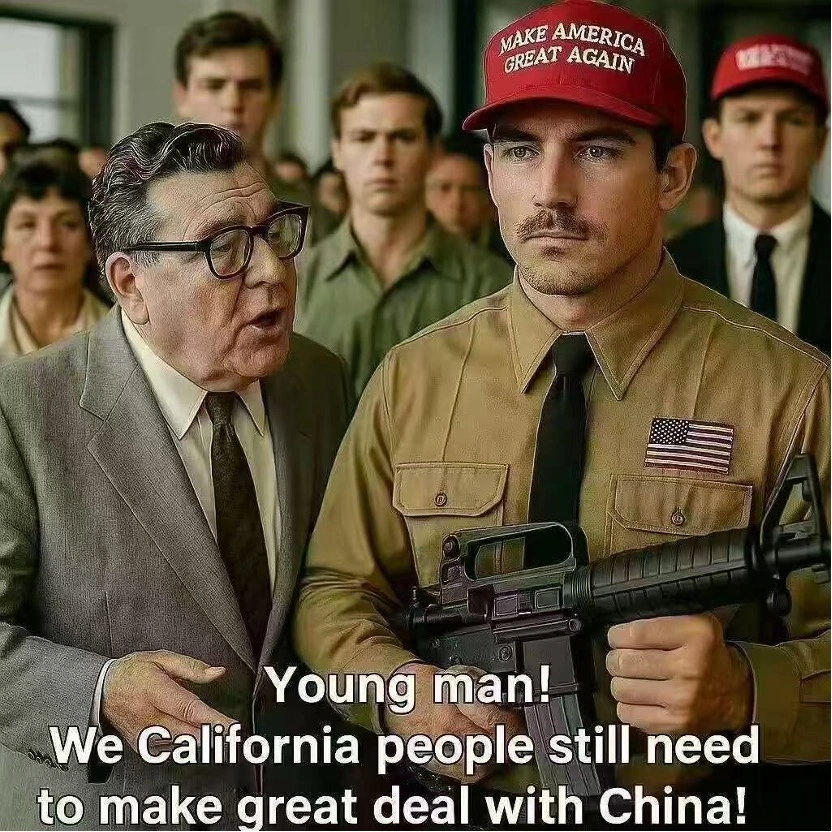 (A meme that gained popularity after California Governor Gavin Newsom stated that U.S. tariff policies do not represent the will of the American people.)
(A meme that gained popularity after California Governor Gavin Newsom stated that U.S. tariff policies do not represent the will of the American people.)
The post How Would Mao Zedong Cope With Trump? first appeared on China Academy.
]]>The post Trump’s Tariffs Make Chinese Agriculture Great Again first appeared on China Academy.
]]>
On April 8, Trump launched an extra 50% tariffs on China, causing global stock markets to plummet further. In contrast, China’s agricultural sector surged against the trend, with over 20 agricultural stocks hitting the daily limit-up and 8 soaring by more than 20%. By April 9, many companies maintained gains exceeding 10%.
The performance of China’s agricultural stocks demonstrates the effectiveness of Beijing’s countermeasures against Trump’s tariffs. On April 4, China’s Ministry of Commerce swiftly imposed retaliatory 34% tariffs on U.S. products, with American agricultural goods bearing the brunt. The New York Times acknowledged this would hit hard, because according to the U.S. Department of Agriculture, 14% of U.S. agricultural exports in 2024 went to China, totalling over $27 billion.
Take soybean as an example, a February 2025 report by the USDA’s Foreign Agricultural Service noted that China imports 60% of the world’s soybeans. China’s dominance in soybean trade continues to grow: Reuters reported that in 2024, China’s soybean imports hit a record 105 million tons, up 6.5% year-on-year.
China’s massive soybean imports stem from its position as the world’s largest livestock producer. Soybean typically accounts for 20% of animal feed due to its high protein content, which enhances meat quality and yield. However, with limited arable land per capita, China prioritizes staple crops like rice and wheat, that’s why China historically relying on U.S. soybean imports.
However, now, two developments are reducing this dependency and even turning the tables on the U.S.
The first is a breakthroughs in China’s agricultural technology.
CCTV reported on March 13 that China is developing high-protein corn varieties. Ordinary corn has about 8% protein content, but China’s new varieties reach 10%. This 2% increase is significant: China produces nearly 300 million tons of corn annually, 70% of which is used for feed. Each percentage point increase in corn protein can help China to reduce annual soybean imports by 8 million tons.
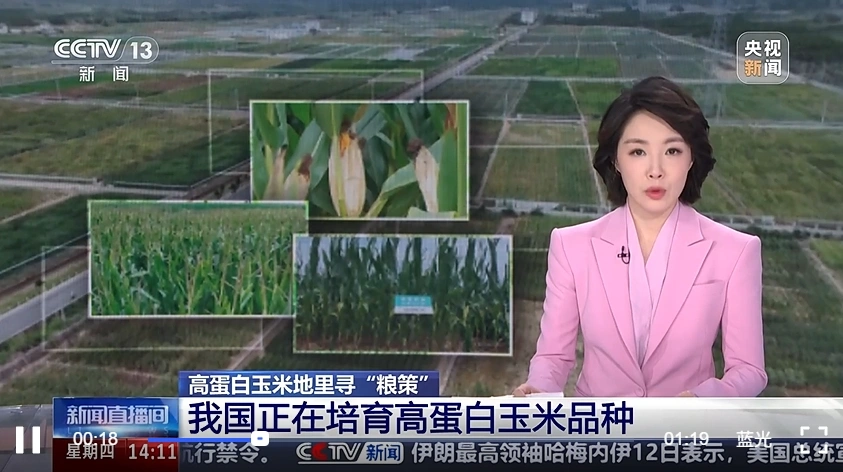
Currently, China’s high-protein corn has already been planted across 10 million mu, about 1.6 million acres. Professor Zhan Junpeng from Huazhong Agricultural University explained that this corn could replace soybeans in feed.
10% is not the ceiling. A Chinese Academy of Sciences report reveals that the breakthrough stems from genes of teosinte, corn’s ancestor, which boasts 30% protein content. Over time, Western agricultural firms prioritized starch accumulation, causing corn to lose its high-protein genes. Now, Chinese scientists are reviving these traits, aiming for 12% and 15% protein levels.
Additionally, China is promoting alfalfa cultivation. Though lower in protein than soybeans, alfalfa grows faster. The purple alfalfa matures in just 25 days, allowing it to be planted after wheat or rice harvests without compromising staple crop security. Research by Professor Shi Yinghua of Henan Agricultural University shows alfalfa not only serves as a protein source but also improves swine reproductive performance, boosting livestock profitability. Other major livestock producers, like Spain, are also exploring alfalfa as a soybean alternative.

Secondly, Brazil Emerges as a More Reliable Supplier
After China’s retaliatory tariffs were announced, Carlos Mera, head of Agricultural Market Research at Rabobank, told Reuters “Brazil will be by far the main beneficiary, the biggest supplier that can replace U.S. soybeans to China. But others could benefit too, including Argentina and Paraguay. On wheat Australia and Argentina should benefit,”
Crucially, China’s investment in Peru’s Chancay Port has slashed shipping times between South America and China by at least 10 days. Supporting tunnels and highways further streamline the transport of Brazilian soybeans, timber, and minerals to China. The port reduces preservation and fuel costs, making Brazilian soybeans more price-competitive in China.
As fellow BRICS members, Brazil and China also enjoy greater political stability in trade. Reuters notes that since 2016, China’s soybean imports from the U.S. have plummeted from 40% to 18%, while Brazil’s share surged from 46% to 74%. With Trump doubling down on tariffs, this shift will accelerate.
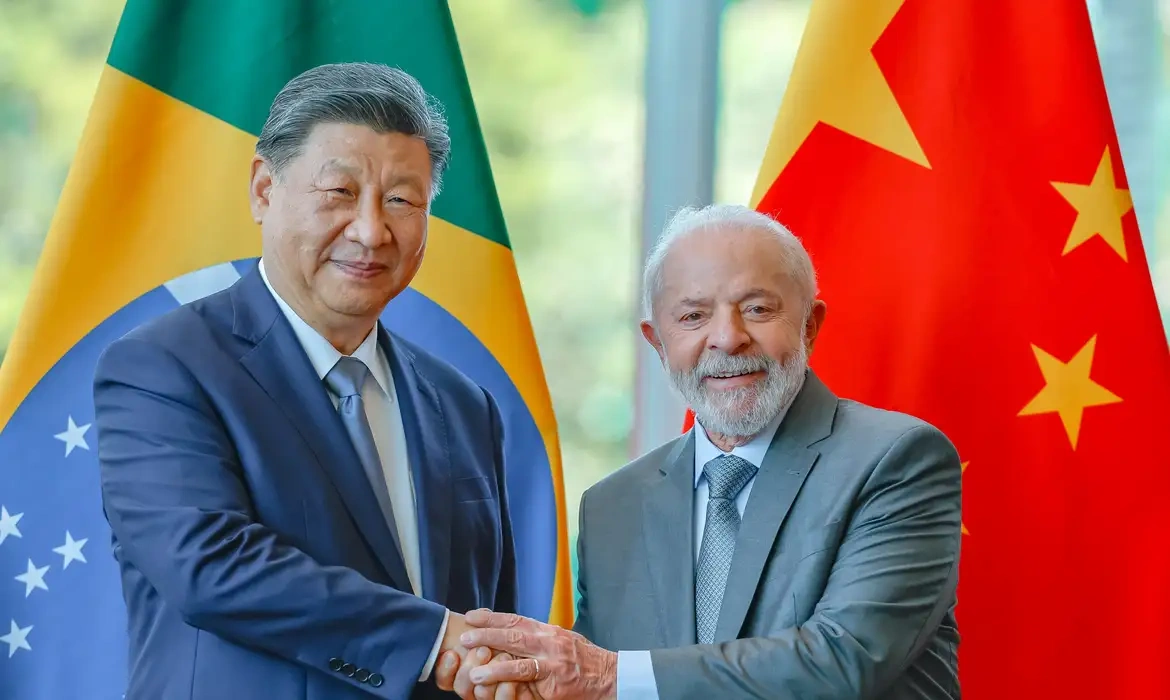
In conclusion, through domestic innovation and cooperation with other global south countries, China is steadily reducing reliance on U.S. soybeans. Meanwhile, Trump’s tariff wars once again leave American farmers paying the price. Investigate Midwest observes this echoes the fallout from Trump’s last trade war.
As China’s Ministry of Commerce stated on April 9: “History repeatedly proves that protectionism fails to improve a nation’s economy,” “No country will abandon its legitimate development interests to appease unreasonable demands, but this does not preclude resolving differences through equal dialogue.”
The post Trump’s Tariffs Make Chinese Agriculture Great Again first appeared on China Academy.
]]>The post EU’s Weakness Stops It from Confronting Trump to the End first appeared on China Academy.
]]>Setting aside the emotional reactions, the pressing issue is how to respond to Trump’s tariff stick. Since Trump took office, the Chinese government has been assessing the scope and intensity of the tariff war. The imposition of reciprocal tariffs and a series of accompanying measures are clearly the results of strategic planning, rather than mere retaliation. Other economies have also made their own judgments regarding Trump’s tariffs. For instance, British Prime Minister Keir Starmer’s PR acumen is one reason why U.S. tariffs on the UK remain relatively low.
 On April 2, Keir Starmer said: “I really do not think it’s sensible to say the first response should be to jump into a trade war with the US”
On April 2, Keir Starmer said: “I really do not think it’s sensible to say the first response should be to jump into a trade war with the US”
It must be noted, however, that some views predicting a U.S. “isolationist lockdown” and a newly formed global supply chain among the rest of the world may be overly optimistic about the roles of countries other than China. The more realistic scenario is that—excluding China and the EU—most other economies are simply negotiating when and how much to concede to the U.S. in trade terms. Israel and Vietnam lowering their own tariffs are early signs of such concessions.
The EU, due to the differing industrial structures and fiscal conditions among its member states, is also unlikely to mount a substantial resistance to U.S. tariffs. This not only means that China may be the only economy capable of standing up to Trump in the long run, but also that the EU, as one of the world’s three primary economic blocs, is standing at a crossroads. Whether the EU chooses to raise tariffs or not, internal political and economic tensions are likely to intensify. In a time when the illusion of EU unity has largely dissipated, whether the Union will continue to unravel is a question worth serious consideration.
In my previous article, I outlined why Trump initiated this tariff war. Analyzing the long arc of his ideological development, it’s clear that tariffs are part of his broader plan to reshape the United States and are one of the key sources of his stubborn confidence. The undeniable decline of U.S. power and Trump’s own advancing age have heightened his sense of urgency, compelling him to adopt more forceful and radical measures in an effort to reverse what he sees as neoliberal globalization’s erosion of American strength. In this respect, Trump is somewhat akin to former Israeli Prime Minister Ariel Sharon, who forcefully dismantled Jewish settlements despite fierce opposition.
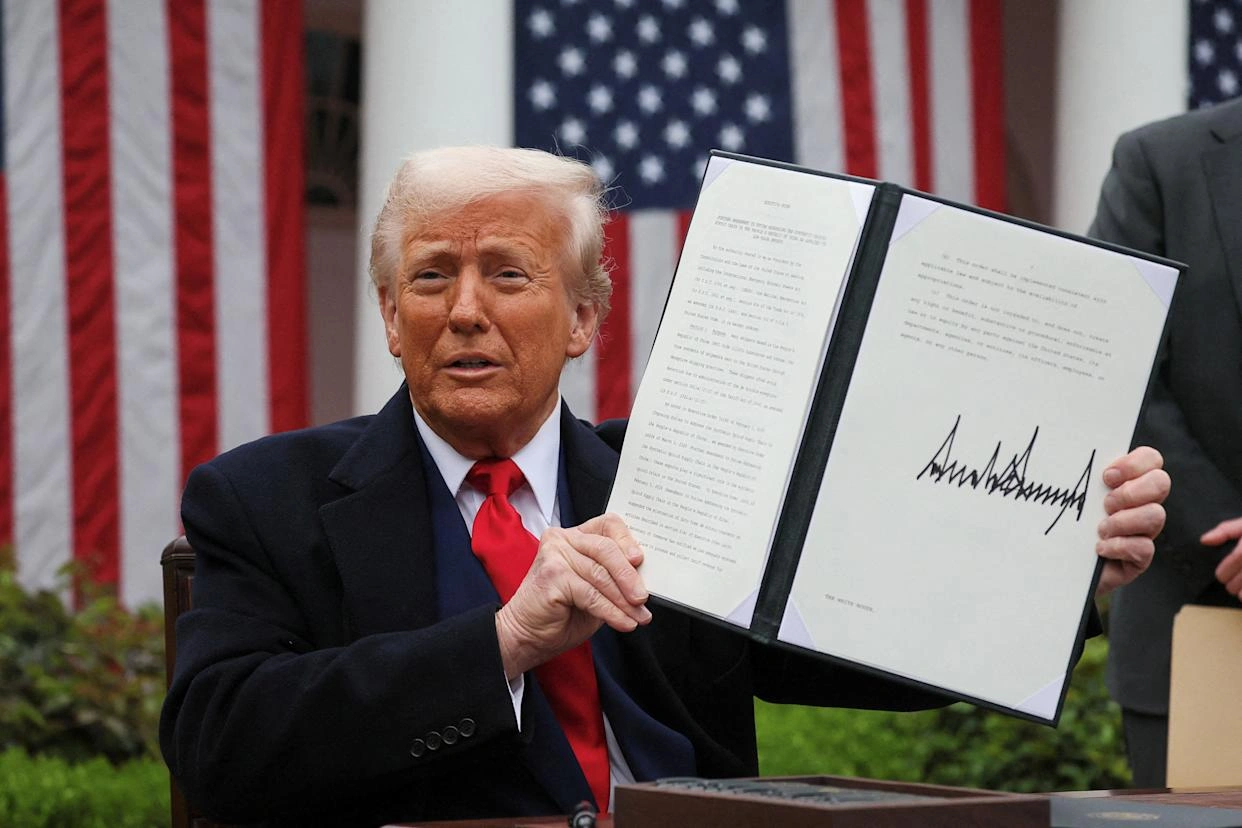 Donald Trump on April 2 announced a 10% tariff on all imports but even higher rates on dozens of trading partners including China and the EU.
Donald Trump on April 2 announced a 10% tariff on all imports but even higher rates on dozens of trading partners including China and the EU.
On a technical level, Trump’s confidence in launching the tariff war is based on two factors. First, the tolerance of his core supporters—particularly the MAGA base—toward the economic pain tariffs may cause; and second, the fact that the U.S. dollar still serves as the dominant currency in global trade. The MAGA crowd’s tolerance stems from the fact that they are closely tied to those who have suffered under neoliberal globalization. While tariffs inevitably impact everyday life, their effects are felt differently in globalization hubs like New York or Los Angeles versus in rural Ohio.
A shortage of cheap eggs in Manhattan doesn’t mean people in rural Kentucky will go without. Wall Street’s stock meltdowns have little direct connection to a farmer in Montana. As the Chinese saying goes, “The barefoot people aren’t afraid of those who wear shoes,” meaning that those with little to lose are less fearful in confrontation. This aptly describes the contrast between MAGA supporters and the beneficiaries of neoliberalism.
The second factor is Trump’s exploitation of the global dominance of the U.S. dollar. While his destruction of neoliberal globalization will inevitably wound the dollar’s supremacy, there is a time lag. During this interim, Trump can wage his tariff war while the dollar still retains its role as the dominant global currency. This is why only China and the EU have a real chance at resisting Trump’s tariffs.
In practice, we’ve seen that most countries either remain silent or call for restraint to avoid escalation. As former British Prime Minister Tony Blair put it, “I don’t think it is in the UK’s best interest to retaliate.”
This explains why much of the current media narrative centers on tolerance. Rather than trying to dislodge the dollar, chipping away at Trump’s support base seems like a more achievable goal. A flood of media stories and analyses claim that Americans will suffer deeply under tariffs, with particular focus on the impact on MAGA supporters.
Trump’s “win, win, win” rhetoric is essentially a way to raise this tolerance threshold. It serves a similar function to wartime propaganda and information control, which are used to sustain internal morale and the support of core voters. As more countries cave and offer concessions to the U.S., Trump will gain ample leverage. It’s foreseeable that as this tariff war drags on, global media battles over its narrative will only intensify.
Let’s now return to the realpolitik of global affairs. How many countries can bear the cost of resisting Trump’s tariff war? In theory, that depends on whether other economies can unite in confronting the challenge posed by his tariffs. But in reality, small countries have no choice but to accept the situation as it is. For them, Trump’s tariff war is like a natural disaster.
Singapore as a city-state is a typical example—it must passively absorb the negative externalities exported by Trump’s tariffs. However, for countries like Japan, South Korea, and the UK—those that do have the capacity to deliberate on how to respond to Trump’s tariff war—inaction has also emerged as the preferred choice.
This is primarily because there are few effective alternatives to reciprocal tariffs for those large economies. Not imposing them is not only seen as politically weak but also as a de facto concession. While there are ways to shift some of tariff costs onto American consumers without resorting to reciprocal tariffs, these methods are neither as direct nor as effective—and they often come with significantly higher implementation costs.
In practical terms, refusing to impose reciprocal tariffs is tantamount to direct concessions to the U.S.—and worse, it lowers the bar for future demands from Trump. After all, dismantling neoliberal globalization is his ultimate goal; reducing trade deficits is just one of many surface-level expressions.
For economies considering reciprocal tariffs, they must evaluate three key factors: their trade surplus with the U.S. (exposure level), their domestic economic and fiscal strength (how much pain they can absorb), and their political-military dependence on the U.S. In simple terms, strategic autonomy in political, economic, and military spheres determines a country’s capacity to respond.
Ultimately, countries like the UK, Japan, and South Korea have effectively abandoned any resistance. For a post-Brexit UK, the relationship with the U.S. is its last thread of global influence—so that PM Starmer viewed a 10% tariff as a relative victory. In Japan, Shigeru Ishiba called the tariffs a “national crisis.” While pleading with the U.S. for exemption, the Japanese government quietly began drafting support measures for businesses and households, including plans for supplementary budgets. In South Korea, where President Yoon Suk Yeol has been removed from office and a new election isn’t scheduled until June, making decisions on tariff policy seems even more unlikely.
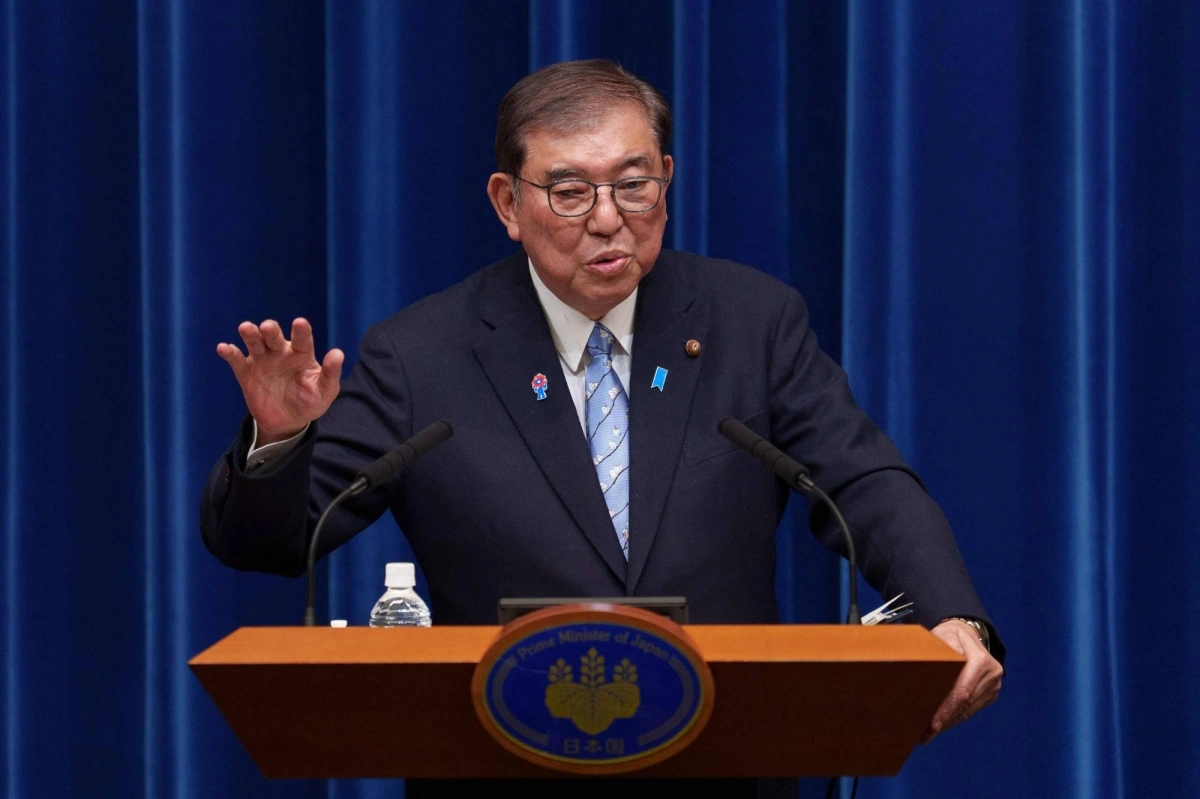 Prime Minister Shigeru Ishiba said on April 5 that he plans to speak with Donald Trump “within the next week” to discuss the president’s decision to slap Tokyo with tariffs.
Prime Minister Shigeru Ishiba said on April 5 that he plans to speak with Donald Trump “within the next week” to discuss the president’s decision to slap Tokyo with tariffs.
The wavering stance of these major economies is part of Trump’s winning formula: even if he fails to pressure China, he can still exploit their weakness to recoup the costs of his tariff war. Those who believe Trump is simply reviving 19th-century imperial trade preferences misread his strategy. Any similarities are merely side effects—not the central objective—of his international trade policy.
Currently, only China and the EU remain as possible challengers to Trump (Russia, partially excluded from the neoliberal global trade system, might count as a “half” challenger). The EU, like China and the U.S., has a sufficiently large economy, a somewhat alternative trade settlement currency, and a degree of industrial independence. It also consistently emphasizes strategic autonomy and refuses to see itself as an economic colony of the U.S. From a pure perspective of currency internationalization, the EU even enjoys an advantage over China—the euro is more internationally integrated than the RMB. Moreover, the EU, outside North America, is a core pillar of neoliberal globalization.
However, unlike China’s swift imposition of reciprocal tariffs, the EU’s only responses so far have come from Macron’s largely ignored threats and vague warnings from European Commission President Ursula von der Leyen. This just exposes the EU’s lack of genuine strategic autonomy.
As I’ve previously argued, one of the EU’s greatest structural flaws lies in its supranational institutions, which are powerless to prevent member states from prioritizing self-preservation. The dream of a pan-European identity is beautiful, but each country’s real concern is maximizing its own share of the pie.
As a result, EU member states have been unable to reach a consensus on Trump’s tariffs, as each country has its own concerns. On one hand, as the most important second-tier economies within the EU, they are too big to fail. Greece may be allowed to go bankrupt, but a collapse of either Italy or Spain would have devastating consequences for the broader EU economy. On the other hand, these two countries also reflect the stark fiscal realities of Southern Europe, where sovereign debt levels are already alarmingly high. Any comprehensive EU confrontation against Trump’s tariffs would only further limit their already shrinking fiscal room for maneuver. (France faces a similar dilemma, though to a slightly lesser extent.) This is why, despite sitting on opposite ends of the political spectrum, the governments of both countries have called for calm and urged the EU to avoid a full-scale confrontation.
Eastern European countries, by contrast, are more likely to oppose tariff escalation due to their political and military dependence on the United States. Compared to Western Europe, these nations generally run smaller trade surpluses with the U.S.—a consequence of their more modest economic scale—and rely far more heavily on American security guarantees. While many of them are frustrated with Trump’s shifting stance on the Russia-Ukraine war, that dissatisfaction isn’t strong enough to override a basic reality: unless they surrender to Russia, their only viable security partner is the United States. This is a widely accepted truth not only in the Baltic states but also in major Eastern European powers like Poland. As Polish Prime Minister Donald Tusk put it, “A severe and unpleasant blow, because it comes from the closest ally, but we will survive it. Our friendship must also survive this test.”
France and Germany are the most vocal resisters—or, more accurately, the only real drivers of pushback. For Germany, already suffering from a severe industrial downturn, Trump’s tariffs delivered a direct blow to the incoming government. The Guardian even described it as “another nail in the coffin” for Germany’s auto industry. Macron, who takes every opportunity to perform France’s commitment to strategic autonomy, was even more proactive. Well before Trump’s tariff hammer came down, France had been pushing for a unified European response. If France and Germany were operating outside the EU framework, they might well have chosen to give up resistance like the UK, Japan, and South Korea. But with the weight of the EU behind them, they clearly have more ambitious ideas.
However, by leveraging the EU to counter U.S. tariffs, France and Germany are effectively offloading part of their own costs onto other member states. If they truly wanted to act independently, they could bypass the EU and impose tariffs on the United States directly. Of course, many readers might point out that the EU holds exclusive authority over external trade policy. But let’s not forget: even policies like the Schengen Agreement—which also fall under EU jurisdiction—can be swiftly suspended when national governments invoke a state of emergency. Put bluntly, if France and Germany decide to break EU rules, what can Brussels realistically do to stop them?
This cost-sharing approach has already sparked strong resentment among other EU member states. Worse still, while pushing for a collective EU response to U.S. tariffs, France and Germany have also sought to shift as much of the economic burden as possible onto other members. For example, France is the EU’s largest wine exporter and much of its wine goes to the U.S. When Trump threatens retaliatory tariff on European wine after EU proposed American whisky tax, the French prime minister last month requested that American bourbon be excluded from the EU’s retaliation list. Similarly, Germany’s incoming government has unveiled a €500 billion stimulus plan aimed at boosting domestic production, prompting accusations from other EU countries that Germany is engaging in unfair competition within the Union.
Clearly, the internal scheming among member states and bureaucracy are the key reason behind the EU’s failure to respond to Trump’s tariffs. This is a long-standing issue for the EU as a supranational body, and Trump’s tariff war has only deepened existing fault lines. After prolonged bargaining, the EU will likely offer some form of response—but its lack of true strategic autonomy makes it highly likely to blink first in this game of chicken. Every time Trump raises the stakes, internal divisions within the EU are further exposed, and the darker side of European integration becomes more apparent. Put more precisely, Trump has numerous ways to circumvent the EU, France, and Germany, targeting and splintering individual member states one by one.
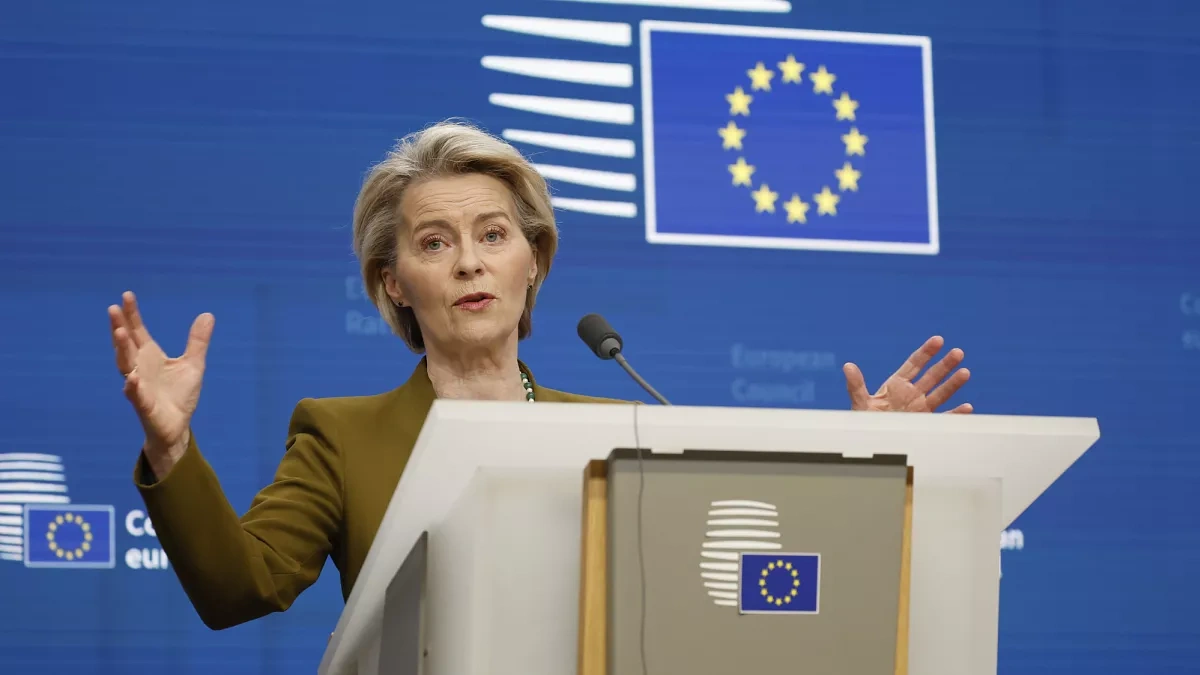 Ursula von der Leyen stated that Brussels has a “strong plan to retaliate” against Trump’s reciprocal tariffs
Ursula von der Leyen stated that Brussels has a “strong plan to retaliate” against Trump’s reciprocal tariffs
As for the once-frequent talk of strategic economic cooperation between China and the EU, one can only say the theory sounds promising, but political reality is far more sobering. It’s become increasingly clear to Chinese observers that, since the COVID-19 pandemic and especially the outbreak of the Russia-Ukraine war, the EU has been losing weight in China’s strategic economic calculus. More importantly, even today, the EU’s mainstream political forces show little genuine willingness to strengthen economic cooperation with China.
In the various signals coming out of the EU, there has been emphasis on strengthening southern market agreements and building a Mediterranean economic zone—but notably little discussion of enhanced China-EU trade cooperation. In fact, this perspective barely exists outside academic circles. On the contrary, one of the hottest topics in the European Parliament right now is Huawei’s bribery scandal, which a significant number of European politicians are using as pretext to intensify strategic competition with China. Not to mention that the Chinese spy case involving Prince Andrew is currently one of the most popular tabloid stories in the UK. The once-celebrated China-EU Comprehensive Agreement on Investment was effectively dead on arrival.
When China and the U.S. clash, it’s true that Europe often suffers as collateral damage. But history has shown Europe’s consistent tendency to side with the U.S. under pressure. As more and more economies concede to the U.S. in this tariff war, China will become the last line of resistance against Trump’s trade offensive. This unprecedented pressure will pose a major test to the strategic resolve of both China and the United States. That is why I continue to emphasize the importance of building stronger domestic communities and regional economic circulation.
Trump’s tariff policy signals a profound reordering of the global economic landscape. Only by accelerating internal market integration can countries build resilience against extreme external volatility. The illusion of strategic partnership under neoliberal globalization is over—welcome back to the harsh and painful era of great-power strategic competition.
The post EU’s Weakness Stops It from Confronting Trump to the End first appeared on China Academy.
]]>The post Tariff War: Trump’s Desperate Move, With One Unexpected Win| Explained by Charles Liu first appeared on China Academy.
]]>The post Tariff War: Trump’s Desperate Move, With One Unexpected Win| Explained by Charles Liu first appeared on China Academy.
]]>The post Chinese Foreign Ministry Responds to “104% US Tariffs on China” first appeared on China Academy.
]]>Foreign Ministry Spokesperson Lin Jian emphasized that the legitimate development rights of the Chinese people must not be undermined, and China’s sovereignty, security, and development interests must not be infringed. We will continue to take strong and effective measures to protect our legitimate rights and interests.
The post Chinese Foreign Ministry Responds to “104% US Tariffs on China” first appeared on China Academy.
]]>The post Xinjiang Insider: Creating an “Oilfield” Rivaling America’s Largest One first appeared on China Academy.
]]>The April 2nd issue of Xinjiang Daily reported the story of an engineer from an agricultural machinery company in Xinjiang.
In 2014, Liang Dingyi joined a Zhejiang-based agricultural machinery company.”The predicament of China’s cotton picking machine being technologically constrained motivated me to contribute to domestic harvester development,” Liang recalled. Xinjiang, accounting for most of China’s cotton output, became his proving ground.
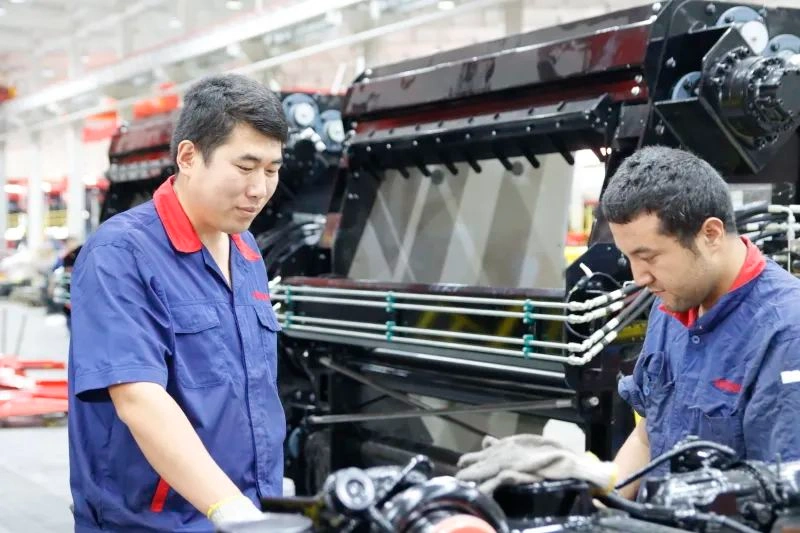 Liang (left) in a cotton picking machine factory
Liang (left) in a cotton picking machine factory
Later, he joined Xinjiang Boshiran Intelligent Agricultural Machinery Co., Ltd. To test the performance of the cotton pickers, Liang and his team conducted intensive field tests in Luntai County. For one month, they operated two prototype machines across thousands of acres, working day and night to pick cottons.
 Liang demonstrating the performance of a cotton picker in the field
Liang demonstrating the performance of a cotton picker in the field
Thanks to the efforts of Liang and his team, the company’s cotton pickers have achieved excellent results in market adaptability. In 2023 alone, the company sold 602 machines, accounting for more than 40% of the Chinese market.
Today, the company has long established an overseas marketing department. As early as 2019, the first batch of three cotton pickers were exported to Uzbekistan for field harvesting experiments. Due to the recognition of local farmers, in 2023, Uzbekistan customized another 54 cotton pickers, breaking the export record of China’s domestic cotton pickers at that time. At present, the company’s products are also sold to many countries and regions including the five Central Asian countries, South America, and Australia.
Turning Coal into Gas, Xinjiang Will Create a “Big Oil Field”
Coal – the beating heart of the Industrial Revolution – once pumped energy into countless machines, fueling the rapid growth of modern cities. Yet in the era of climate change, crude and inefficient coal usage has become an unsustainable burden. Now, a newly launched project in Xinjiang aims to transform this fossil fuel into cleaner-burning natural gas, making coal consumption more environmentally friendly while enabling more efficient conversion into everyday consumer products.
On March 22, the 2 billion cubic meters/year coal-to-natural gas project in Zhundong, Xinjiang was officially started, and the foundation construction of the building is currently underway.
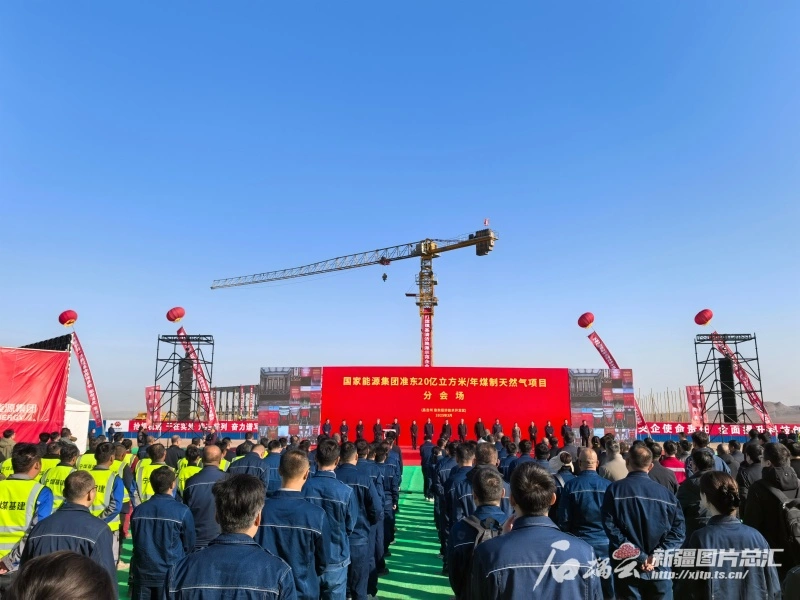 Starting ceremony of the Zhundong coal-to-natural gas project
Starting ceremony of the Zhundong coal-to-natural gas project
Upon completion, the project will produce 1.833 billion cubic meters of natural gas yearly, enough to meet the annual needs of 5.0228 million three-person households, while co-producing 167 million cubic meters of liquefied natural gas (LNG) for vehicle fuel,” said Wang Jishan, Director of Engineering at China Energy Xinjiang Coal-to-Gas Co.
In addition to this project, two other coal-to-gas facilities—each with 2 billion cubic meters annual capacity—are planned for Xinjiang. Using the industry standard conversion (1,255 cubic meters of gas = 1 ton of oil equivalent), the combined 6 billion cubic meters output from all three projects would equal 4.78 million tons of oil.
Notably, on the same day this coal-to-gas project broke ground, the 1-million-ton-per-year coal-to-oil project by Yitai Ili Energy Co. resumed preparations in Qapqal Xibe Autonomous County. And another 4-million-ton-per-year coal-to-oil facility in Hami City had already launched a year earlier.
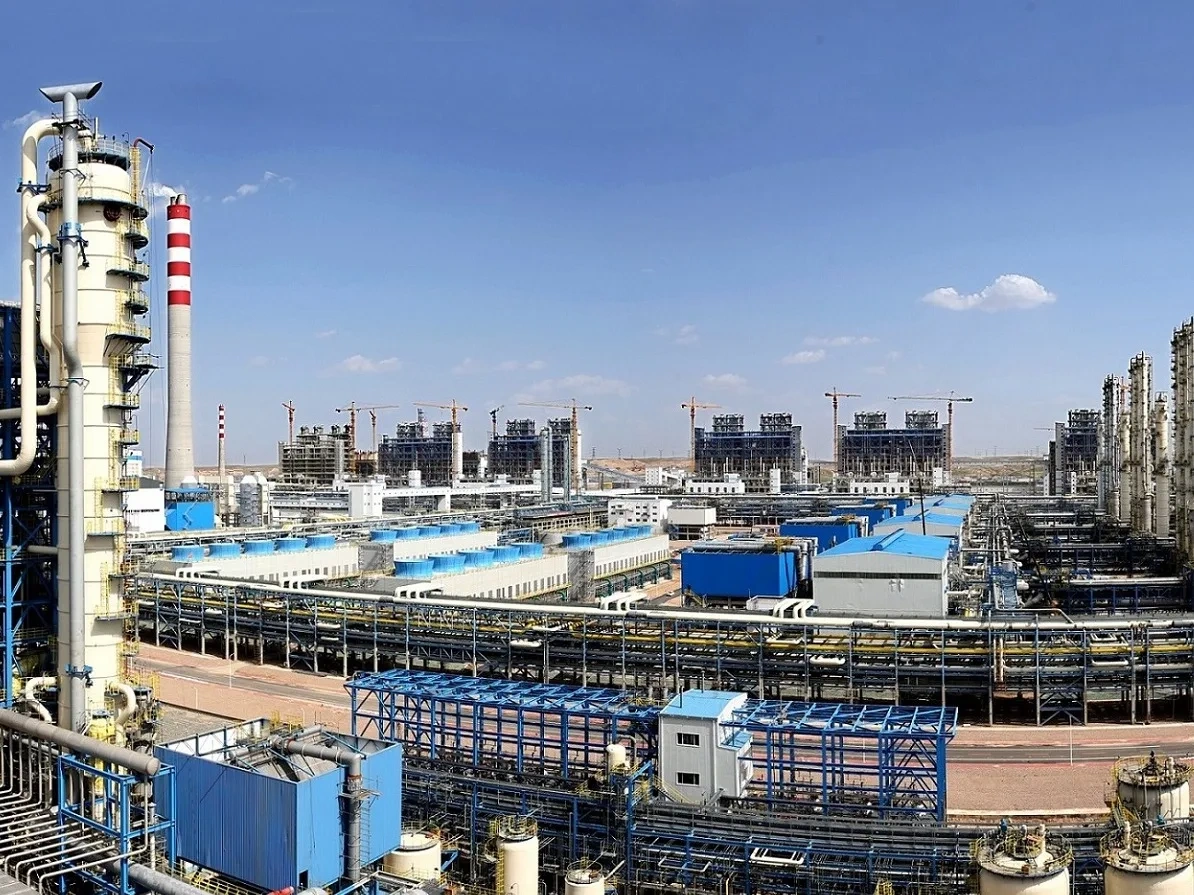 Construction site of the Yitai Ili coal-to-gas project
Construction site of the Yitai Ili coal-to-gas project
If all five coal-to-oil-and-gas projects operate at full capacity, their total output will reach 9.78 million tons of oil equivalent, comparable to the 2024 total oil and gas production of China’s third-largest oilfield, the “Northwest Oilfield,” and slightly lower than the output of Permian Basin oilfield, the highest-producing oilfield in the US.
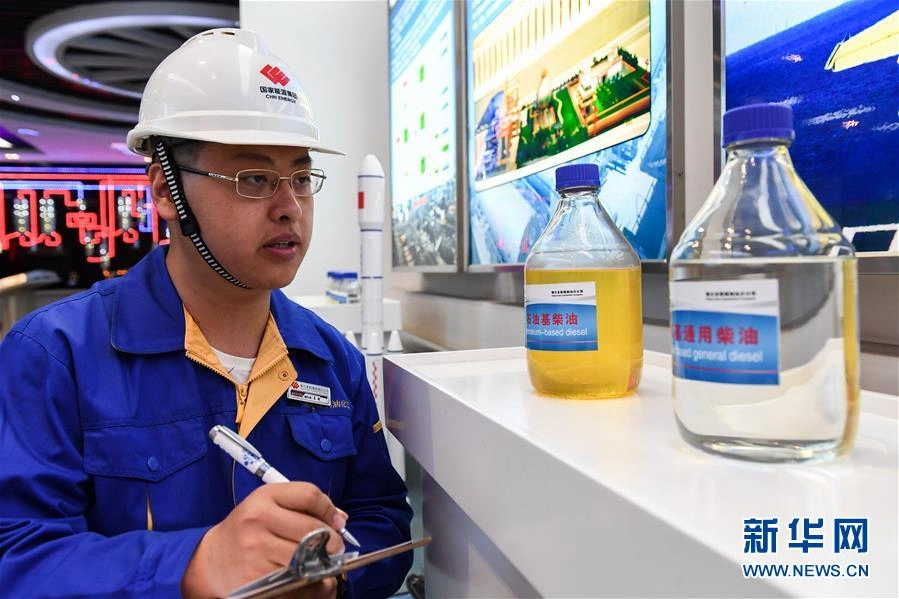 A worker is observing two bottles of diesel oil. The left one is normal one. The right one is converted from coal.
A worker is observing two bottles of diesel oil. The left one is normal one. The right one is converted from coal.
Public information shows these five projects represent a total investment of approximately ¥240 billion ($33.6 billion), with annual coal consumption of about 35 million tons, directly creating around 13,000 new jobs.
However, the development of coal-to-gas and coal-to-oil projects has not been that easy. Pipeline transmission costs and fluctuations in international oil prices previously caused sustained losses for Xinjiang’s projects, even leading to some being suspended outright.
Recent years have seen improvements in these unfavorable conditions. Take two coal-to-gas enterprises in Ili Kazakh Autonomous Prefecture as examples: with an annual production capacity of 3.3 billion cubic meters, they now profitably sell their synthetic natural gas to Zhejiang, Shandong and other eastern regions through the West-East Gas Pipeline.
Encouraged by this success, multiple enterprises across Hami, Turpan, Changji Hui Autonomous Prefecture, and Ili Kazakh Autonomous Prefecture are actively planning new coal-to-gas projects. Industry projections indicate Xinjiang’s coal-to-gas and oil sector will enter a period of rapid investment growth between 2025-2030.
Against the current backdrop of declining coal prices and increasing pressure for energy conservation/emission reduction, these coal conversion projects represent an ideal pathway for Xinjiang’s coal resources.
Xinjiang Smoothly Removed 900 Tons of a Highway Bridge in 3 Hours
How long does it take to demolish a 60-meter-long, 900-ton, 5.2-meter-high highway bridge? Xinjiang’s latest record is 3 hours.
On April 3rd at 13:30, the G30 Lianhuo Highway expansion project in Xinjiang introduced modular bridge demolition technology to reconstruct this section of the highway.
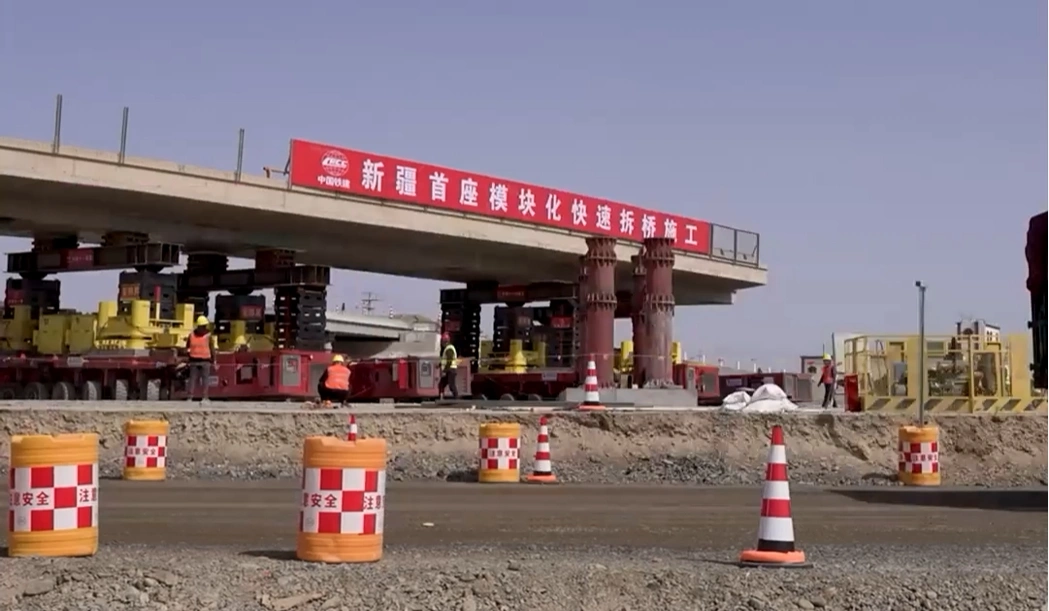 Construction site of the G30 Lianhuo Highway expansion project
Construction site of the G30 Lianhuo Highway expansion project
Due to the high daily traffic volume on this highway section, traditional construction methods would have significantly disrupted cross-regional vehicle flow. The construction team therefore adopted SPMT (Self-Propelled Modular Transporters) technology – an integrated bridge demolition and installation solution – to execute modular removal of the existing bridge.
During the operation, two sets of modular transporters positioned beneath the bridge structure, hydraulically lifted the 900-ton span, then gradually moved it backward before lowering onto temporary supports. The entire demolition process was completed in just three hours.
“Compared with conventional techniques, SPMT reduces bridge demolition time by 75% while enhancing operational safety,” explained Jiang Xingming, director of the project.
Xinjiang Built 6,818 Youth Apartments to Attract Talent
On April 1, Xinjiang Daily reported on a new measure taken by Ganquanbao Economic Development Zone in Urumqi, Xinjiang to attract talent: the government and private enterprises jointly funded and built youth apartments. As of March 24, 3,666 units of aparments had been completed and put into use, and 3,152 units had completed the main structure capping.
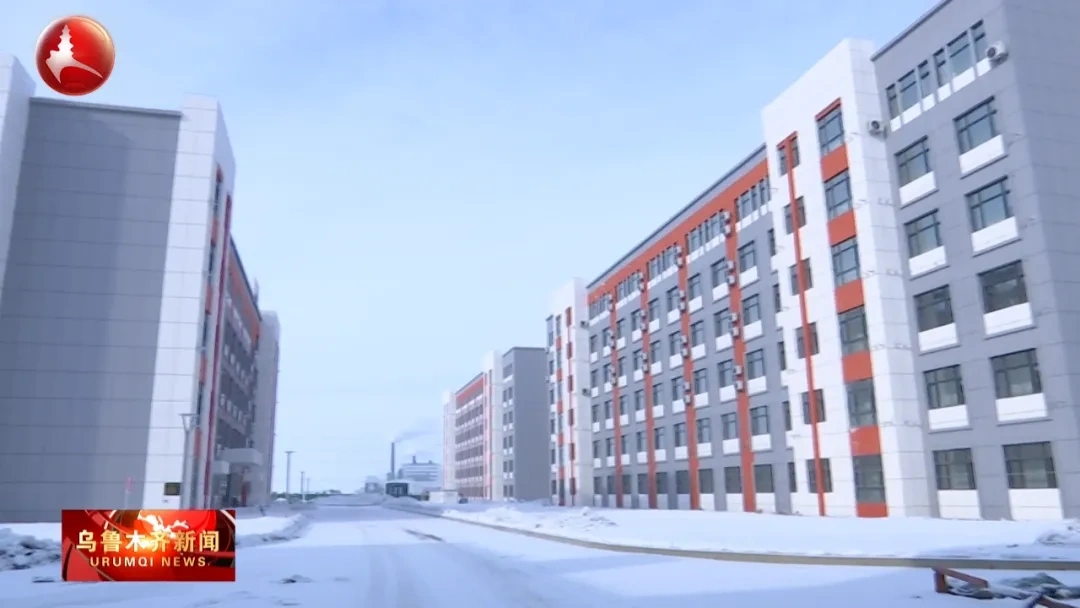 Screenshot of Urumqi’s local news program showing outside view of the youth apartments
Screenshot of Urumqi’s local news program showing outside view of the youth apartments
Project director Liang Xiaoguang introduced that the apartments offer various unit types ranging from single rooms to four-person units. All units come fully furnished with complete amenities including furniture, televisions, shower facilities and other necessities. The residential complex features comprehensive commercial supporting facilities such as dining options, supermarkets, and pharmacies. The second-phase construction will add an underground parking garage to further improve convenience for residents.
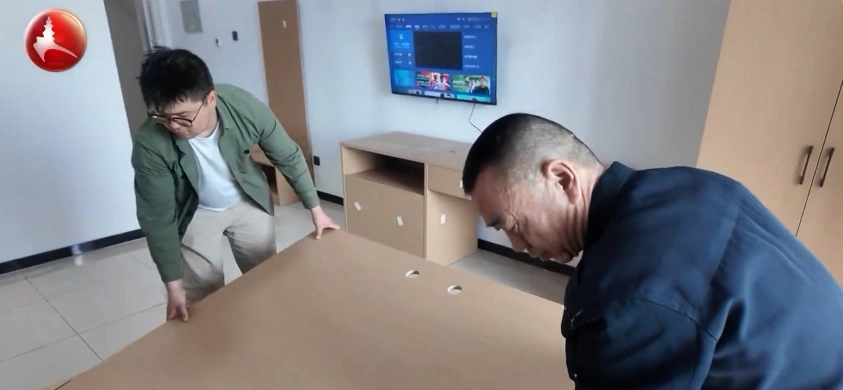 Screenshot of Urumqi’s local news program showing workers installing furniture and electrical appliances in a unit
Screenshot of Urumqi’s local news program showing workers installing furniture and electrical appliances in a unit
At present, 11 companies in the zone have signed agreements to lease the apartment units in this youth apartment complex. The occupancy rate is projected to reach 90% by the end of June, with the completed project expected to accommodate over 2,000 residents.
In addition to this nearly completed youth apartment complex, another apartment project in Ganquanbao Economic Development Zone has been fully finished. The 332 fully furnished apartments come with standardized furniture and appliances, along with amenities such as a basketball court, badminton court, and gym.
“With daily rents ranging from ¥31 to 46 ($4-8), the property offers concierge-style services, and company shuttle buses provide direct transportation to the industrial park, saving tenants over ¥1,000 ($136) per month in commuting costs—it’s incredibly convenient,” said Ma Shuai, a resident.
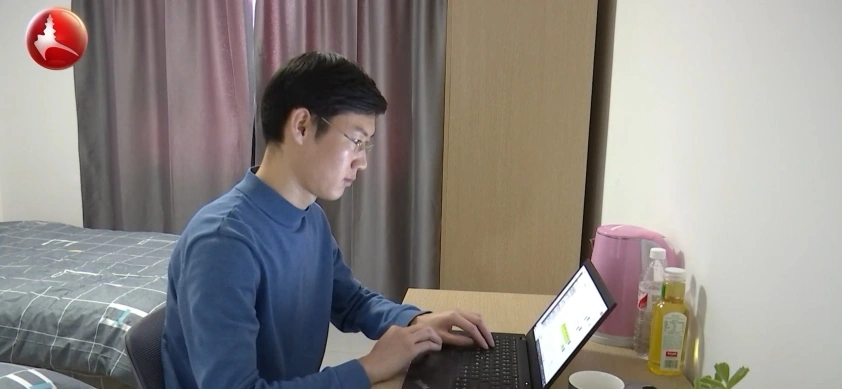 Screenshot of Urumqi’s local news program showing Ma Shuai working in his unit
Screenshot of Urumqi’s local news program showing Ma Shuai working in his unit
The post Xinjiang Insider: Creating an “Oilfield” Rivaling America’s Largest One first appeared on China Academy.
]]>The post China Waited to Strike Back, Now is the Time first appeared on China Academy.
]]>Perhaps Trump believed that, as the US Treasury Secretary Bessent put it, countries would rush to compromise with the US government early on, after which Trump would ease some pressure and see how much more he could squeeze out. It cannot be denied that many countries did indeed plan to do just that.
However, what happened next caught Trump off guard. The US stock market plunged for two consecutive days, with indices dropping by about 10%, resulting in a market capitalization loss of $6.4 trillion. On April 4th, the Chinese government announced substantial retaliatory measures, with 11 arrows firing back, imposing a 34% tariff on all US goods, causing another sharp drop in the US stock market on the same day.
In my view, this is precisely the retaliatory opportunity that China has been waiting for, and the time has come.
Trump played all his cards on tariffs. This is not only his weakest moment but also the best opportunity for a counterattack.
Since 2018, China has been preparing earnestly to contend with the US. Throughout this process, the US has been making moves, and China has essentially figured out the tactics. Trump’s “Liberation Day” action on April 2, 2025, has laid all his cards on the table. In my opinion, he is not prepared for serious follow-up actions and is just following the same old routine, waiting for other countries to compromise. At this moment, when Trump is at his weakest, China’s strong retaliatory measures are absolutely beyond his expectations and are a checkmate that the US finds difficult to deal with.
The fundamental reason for America’s weakness
The fundamental reason for America’s weakness lies in the decline of its manufacturing sector. The belief that “imposing tariffs can promote the development of American manufacturing” is merely a hollow idea for those who do not understand the actual operations of businesses. Balaji Srinivasan, a prominent Indian-American Silicon Valley investor, serial entrepreneur, technology expert, and futurist, whose thoughts and viewpoints wield significant influence in the tech industry, commented that a symptom of America’s deindustrialization is that many commentators have never truly managed a physical enterprise.
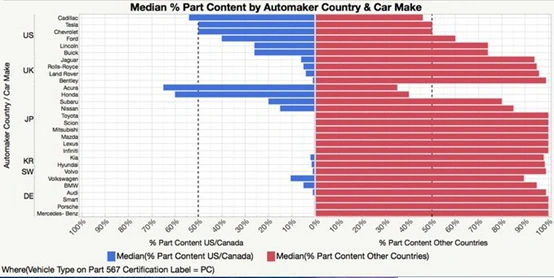 Most American cars heavily rely on foreign sources for their parts.
Most American cars heavily rely on foreign sources for their parts.
An American company imports parts worth $1 million, produces products selling for $1.2 million, and makes a gross profit of $200,000. Faced with a 30% import tariff, it will not shift to local production of components because “it’s like being asked for the equivalent of planting a maple tree when all you need is a little maple syrup” and “establishing a screw factory is much more expensive than paying high tariffs for foreign screws.”
In this scenario, the company will respond in two ways: the first is to opt for lower-priced components at $750,000, still selling the product for $1.2 million, hoping customers will accept it; the second is to pay the $300,000 tariff, sell the product for $1.5 million, hoping to make sales, and in the meantime, borrow money to pay the tariff.
During the McKinley era, the United States had the most efficient workforce and industrial development system globally, making the argument for developing manufacturing through high tariffs plausible. Nowadays, the efficiency of American workers is extremely low, and imposing tariffs cannot solve this problem. Trump mistakenly believed he could emulate McKinley’s success, which is a misguided approach.
China’s Confidence in Counterattack
China’s counterattack is built upon the foundation of having the world’s most powerful manufacturing capabilities, giving them the confidence to confront tariffs head-on, with businesses not compromising and the yuan not devaluing.
After multiple rounds of US tariff impacts, domestic Chinese businesses have formed a consistent expectation: to raise prices in response to US tariffs. US buyers demand that Chinese sellers bear additional tariffs, but Chinese businesses adjust their prices accordingly. If the US imposes a 54% tariff and the US buyer wants the Chinese seller to share half, the seller will raise prices by 27%, or they could choose to bear the full amount and increase prices by 54%. Even if orders are canceled, there is no way around it; losing money on deals is not an option.
The reality is that China’s manufacturing industry has no global rivals; they are essentially competing against themselves. American buyers are free to look elsewhere, but if they could find suppliers abroad, they would have done so already.
For instance, many American and foreign companies manufacture in China and export to the US, so their operations are impacted by tariffs, with Apple being one of the most affected. These companies also consider relocating their production lines. After years of practice, the situation has become clear: the transition is not as straightforward. Even if they are determined to move, they would still need cooperation from the Chinese supply chain.
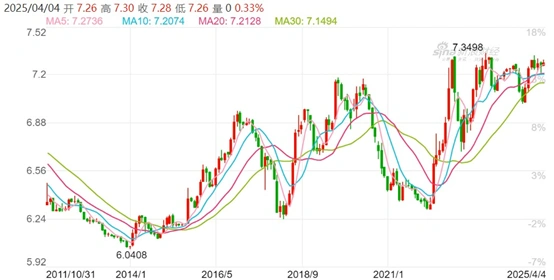
On the currency front, China has gained experience in dealing with the United States as well. In 2018, when Trump imposed tariffs on China, the Chinese yuan devalued, effectively lowering prices of all goods for the US market, thus alleviating some of the pressure on buyers and sellers to negotiate tariffs. Following Trump’s recent tariff hikes, the Chinese yuan did not experience significant devaluation; instead, it saw a 1000 basis point increase, indicating a clear goal of stabilizing the exchange rate. Some suggesting a 20%-40% devaluation of the yuan to counter US threats are simply speaking nonsense. The yuan will not devalue just because the US threatens substantial tariff increases; it is already significantly undervalued and will transmit price pressures outward.
The Impact of China’s Tariffs on US Goods
Let’s discuss the impact of China imposing a 34% tariff on all US goods. In 2024, US exports to China totaled $143.5 billion. Chinese tariffs on all American goods will also pose a significant challenge for US companies. The US stock market is under pressure as the AI bubble has deflated, teetering on the edge of a bear market. The stock market’s impact on the economies of China and the US differs significantly. Both the US economy and Trump cannot afford a stock market crash or prolonged downturn.
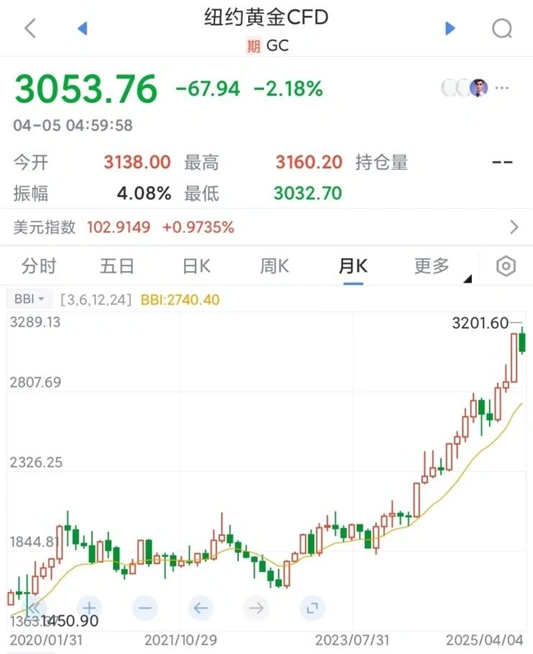
Recently, the price of gold has surged past $3000, dealing a significant blow to the long-term credibility of the US dollar. Global central banks have started to make assessments on the dollar and are increasingly adding to their gold reserves. The pressure on US bonds is also substantial, with interest expenses totaling $480 billion in the first five months of the 2025 fiscal year (starting from October 2024). Over the next 10 months, the US government will need to sell over $1 trillion in bonds each month to meet obligations such as repaying principal, paying interest, and addressing the fiscal deficit. Following the sharp drop on April 4th, the Nasdaq index has fallen by 23% from its peak, entering a bear market. These conditions are placing significant strain on the US economy.
At this critical juncture, Trump is engaging in tariff extortion against all countries worldwide. The strongest player, China, has already retaliated firmly, while other powerful and experienced opponents are also taking action; countries like Canada and the EU will not be as easy to deal with as smaller nations.
Economists are not optimistic about Trump’s tariff actions, and this assessment does not require a high level of expertise. The deep-rooted issues in the US manufacturing sector cannot be solved simply by imposing tariffs; it requires meticulous industrial planning, patient strategic execution, in essence, learning from China.
Trump’s original intention was not to initiate an uncontrollable global trade war; he does not have such a contingency plan. The current US administration has displayed a noticeable lack of discipline and has made several errors. Trump’s strategy is to apply maximum pressure, force opponents to compromise, and negotiate on his terms, expecting to gain advantages through his so-called “art of the deal.”
China is prepared while Trump is not; our side is patiently waiting for the right moment, while the opponent is launching aggressive attacks from all directions. China’s tariff counterattack has already dealt a blow to the US stock market, targeting Trump’s vulnerabilities at the most opportune moment will undoubtedly yield encouraging results.
The post China Waited to Strike Back, Now is the Time first appeared on China Academy.
]]>